Sempervivum arachnoideum, also known as ‘Cobweb Houseleek’, is a small succulent that belongs to the Crassulaceae family. This plant is native to the European Alps and forms compact rosettes with a unique spiderweb-like pattern. In this post, we will provide you with a care guide for this fascinating plant.
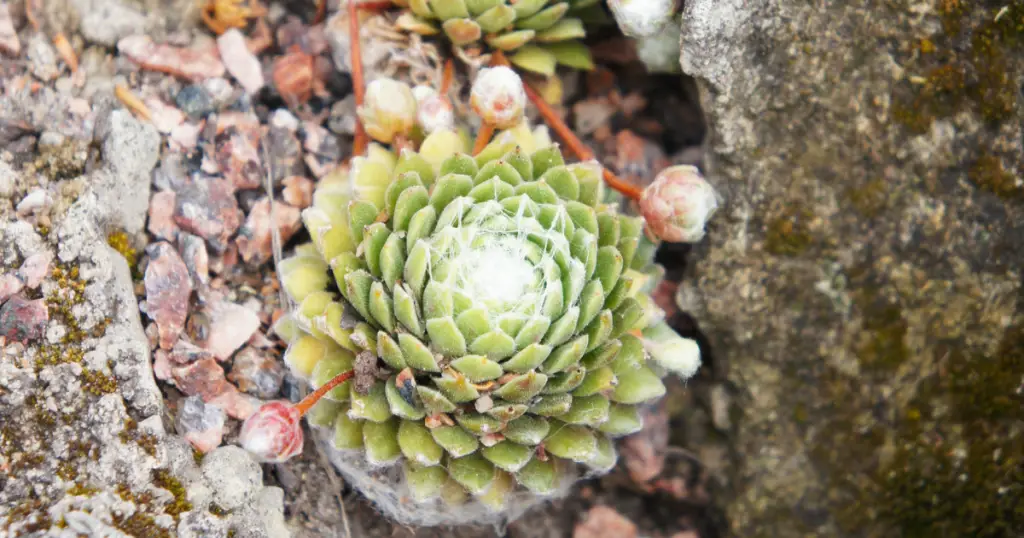
Description of Sempervivum arachnoideum ‘Cobweb Houseleek’
Sempervivum arachnoideum ‘Cobweb Houseleek’ is a charming low-growing succulent that is perfect for rock gardens, alpine troughs, and other small spaces. It typically grows to a height of only 5 cm, but can spread to form a mat up to 20 cm wide. Sempervivum arachnoideum ‘Cobweb Houseleek’ has a distinctive rosette-like growth habit, with leaves radiating out from a central point. These leaves are thick and fleshy, giving the plant a succulent-like appearance. They are typically a bluish-green color, with a hint of purple in some cultivars.
The tips of the leaves are adorned with tiny hair-like structures, called trichomes, which give the plant its unique spiderweb-like appearance. These trichomes also serve to protect Sempervivum arachnoideum ‘Cobweb Houseleek’ from excessive sunlight and water loss. As Sempervivum arachnoideum ‘Cobweb Houseleek’ matures, it produces offsets, or “chicks,” around the base of the plant, which can be easily propagated to create new plants.
You might also like: Repotting Succulents: The Best Time to Repot Your Plants and 3 Ways to Tell When It’s Time
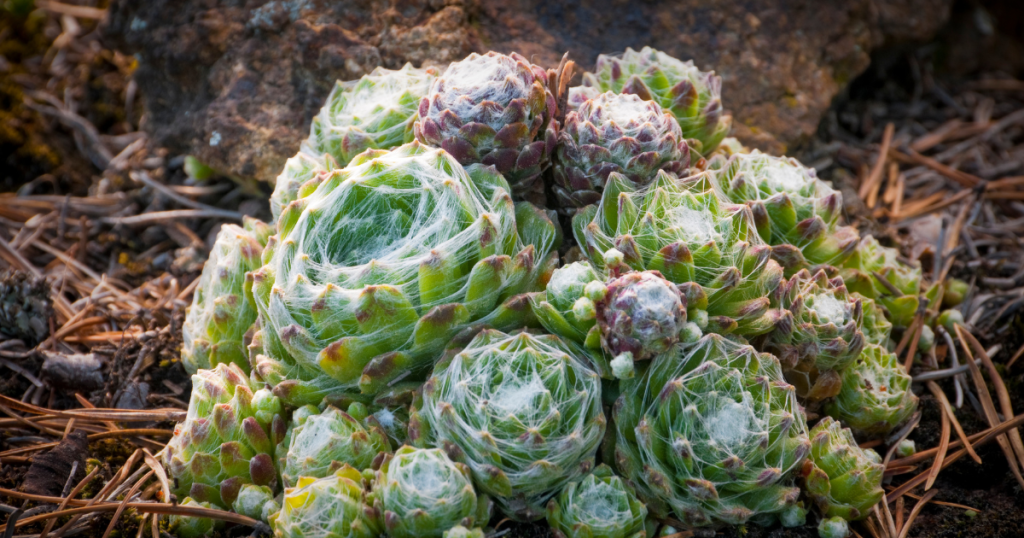
Growing Conditions for Sempervivum arachnoideum ‘Cobweb Houseleek’
Sempervivum arachnoideum ‘Cobweb Houseleek’ is a cold-hardy succulent that thrives in USDA hardiness zones 4 to 8. It prefers well-draining soil and can grow in a variety of soil types, including sandy and rocky soil. Sempervivum arachnoideum ‘Cobweb Houseleek’ requires full sun to partial shade and can tolerate temperatures as low as -29°C. In hotter climates, it should be grown in partial shade to avoid leaf scorch.
You might also like: Succulent Care by Zones
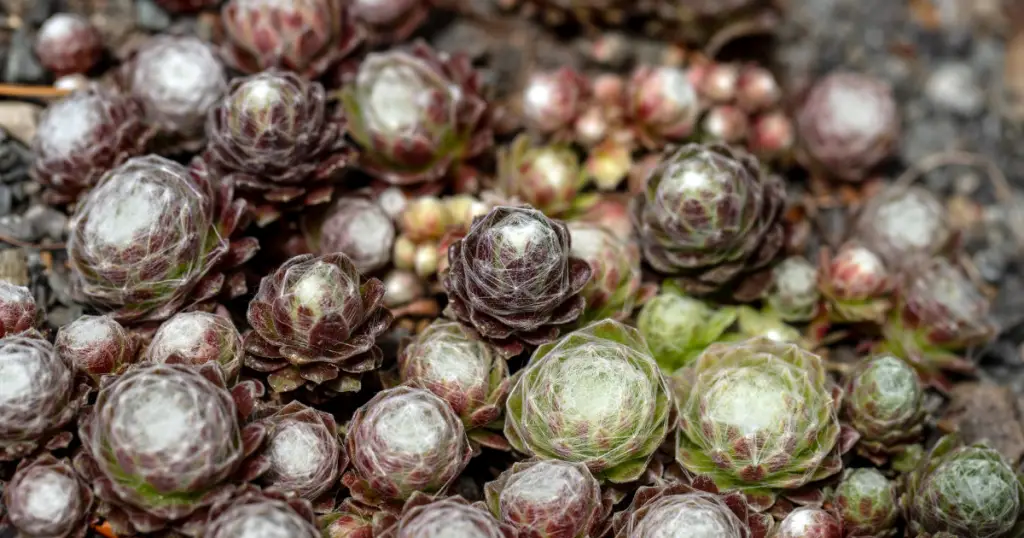
Watering and Fertilizing Sempervivum arachnoideum ‘Cobweb Houseleek’
Sempervivum arachnoideum ‘Cobweb Houseleek’ is a drought-tolerant succulent that does not need frequent watering. Overwatering can lead to root rot, so it’s essential to ensure the soil has dried out completely before watering the plant again. During the growing season, which is typically from spring to fall, it’s recommended to water the plant deeply once a week. Allow the water to reach the roots by watering at the base of the plant, and avoid getting water on the leaves.
You might also like: How & When to Water Succulents So They Don’t Die
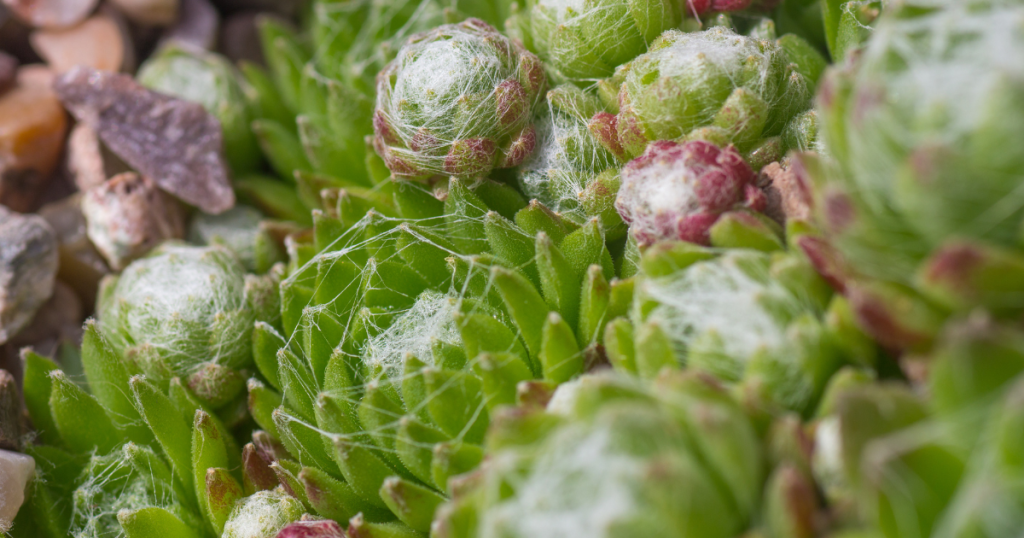
During the winter months, when Sempervivum arachnoideum ‘Cobweb Houseleek’ is in its dormant phase, it requires less water. Reduce watering to once every three to four weeks or only when the soil has completely dried out. It’s important to note that the frequency of watering may vary depending on the growing conditions, such as humidity, temperature, and soil moisture levels.
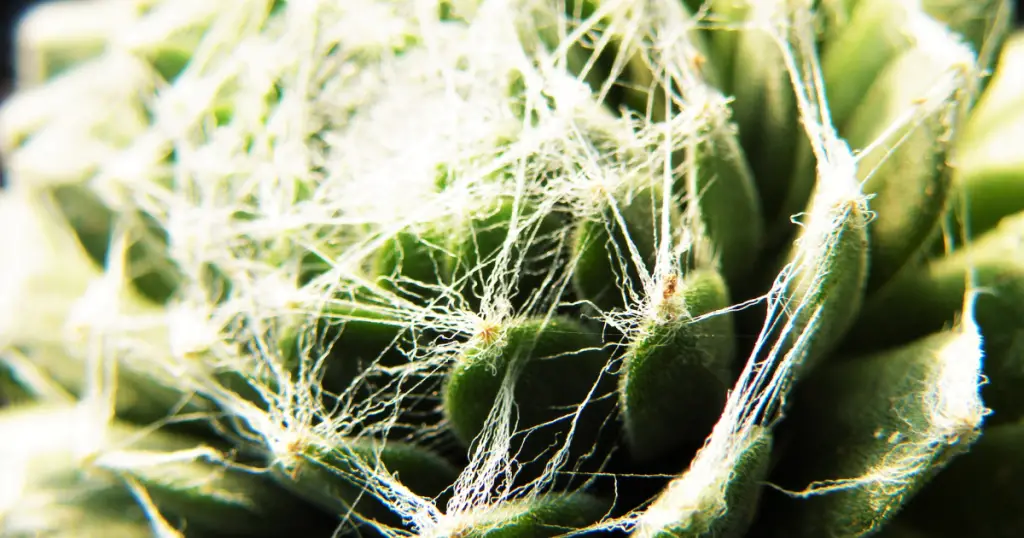
Fertilization is not necessary for Sempervivum arachnoideum ‘Cobweb Houseleek’, as it can survive in nutrient-poor soil. However, you can give the plant a boost by feeding it with a balanced fertilizer once a month during the growing season. Apply the fertilizer at half-strength to avoid burning the plant. Avoid fertilizing during the winter months as the plant is dormant and doesn’t require as many nutrients.
You might also like: Succulent Fertilizer
Propagation of Sempervivum arachnoideum ‘Cobweb Houseleek’
Propagating Sempervivum arachnoideum ‘Cobweb Houseleek’ from offsets is a simple and effective way to expand your collection of these unique succulents. When propagating, it’s important to wait until the chicks have grown to at least 2 cm in diameter before separating them from the mother plant. This ensures that they have enough stored energy to establish themselves in their new location.
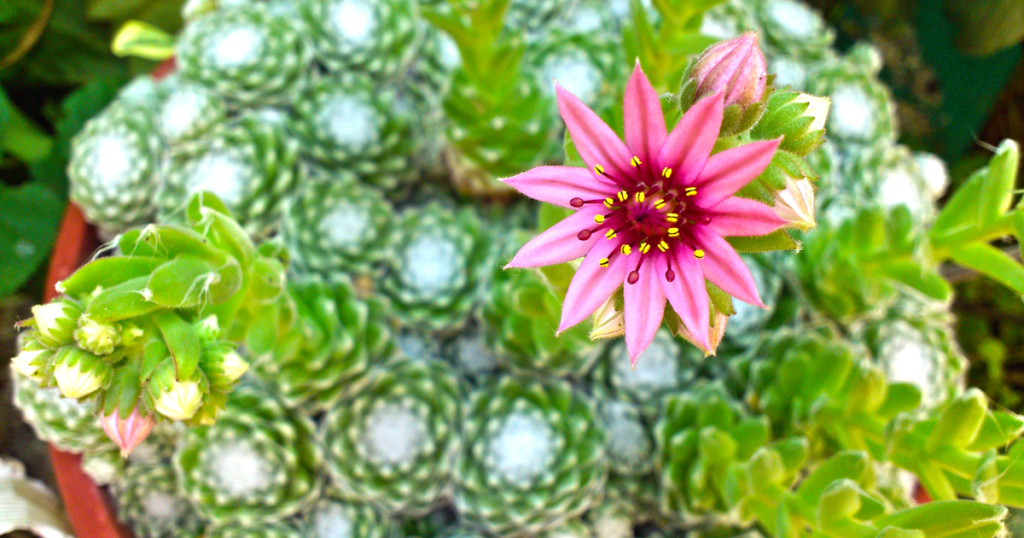
To separate the chicks, gently grasp them near the base and pull them away from the mother plant. Be careful not to damage the roots or stem of the mother plant or the chick. Once you have removed the chick, allow it to dry for a day or two before planting it in well-draining soil. This will help prevent moisture from causing rot as the chick establishes roots.
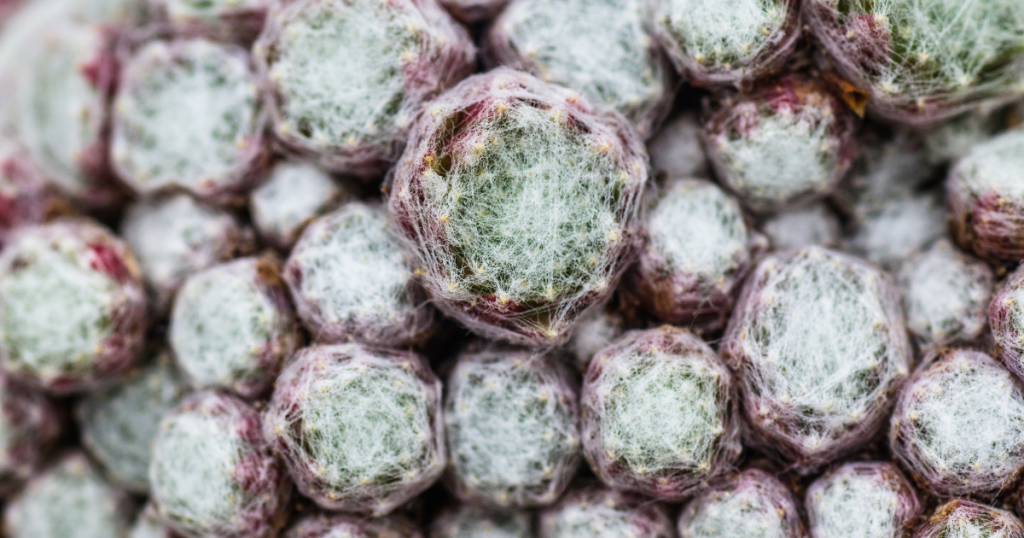
When planting the chick, make sure to provide it with a suitable growing environment. Use a well-draining soil mix and a container with drainage holes to prevent water from accumulating around the roots. Water the chick sparingly until it establishes roots, being careful not to overwater as this can cause root rot. Once the chick has established itself, it can be treated like a mature plant and given the same care instructions.
You might also like: Propagating Succulents 4 Ways: The Best Guide Ever
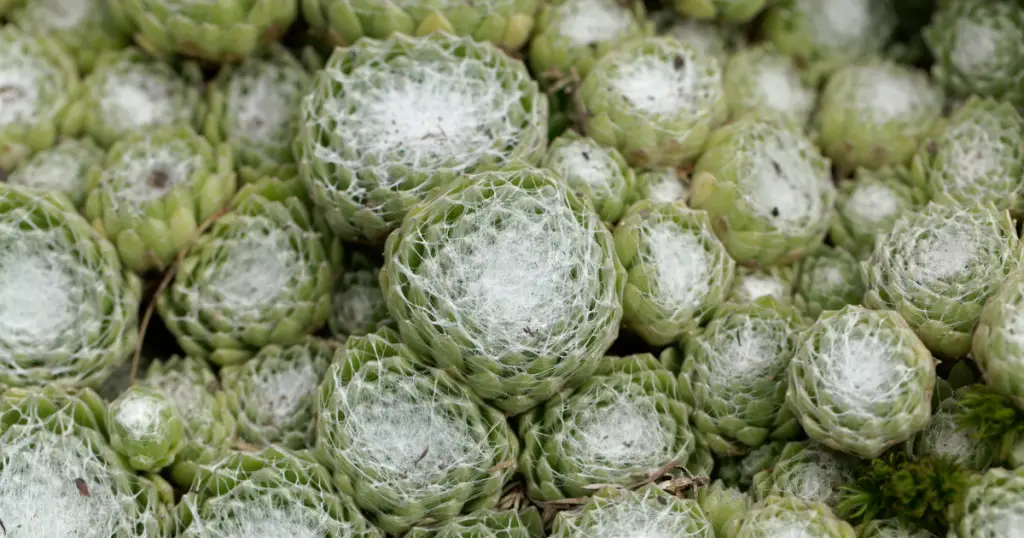
Pests and Diseases of Sempervivum arachnoideum ‘Cobweb Houseleek’
Sempervivum arachnoideum ‘Cobweb Houseleek’ is generally a pest-free plant, but it can be susceptible to mealybugs, spider mites, and aphids. Keep an eye out for any signs of infestation, such as webbing or distorted leaves, and treat the plant with an insecticidal soap. Root rot can be a problem if the plant is overwatered, so be sure to allow the soil to dry out completely before watering again.
You might also like: 12 Succulent Pests and Diseases: Identification, Treatment, and Easy Prevention of Mealybugs, Thrips and More
Creative Uses for Sempervivum arachnoideum ‘Cobweb Houseleek’
Sempervivum arachnoideum ‘Cobweb Houseleek’ is a popular plant for rock gardens, alpine gardens, and container gardens. It can also be used in green roofs, where its shallow roots and drought tolerance make it an ideal choice. Its unique appearance and small size make it a great addition to fairy gardens and miniature landscapes.
Sempervivum arachnoideum ‘Cobweb Houseleek’ is a fascinating plant that is easy to care for and adds a unique touch to any garden or container. With its spiderweb-like pattern and blue-green leaves, it is sure to be a conversation starter. By following

Where to Buy Succulents Online


